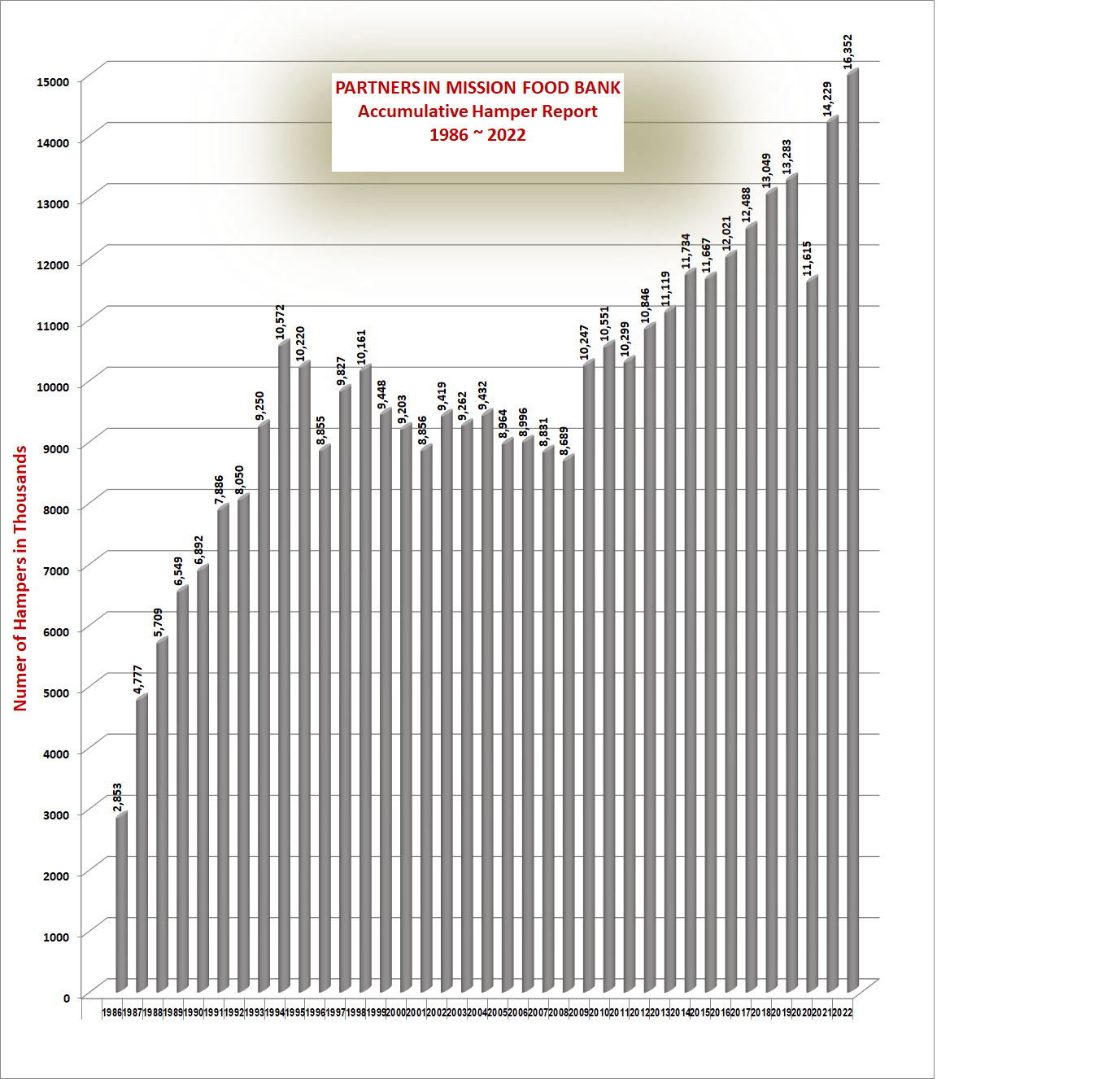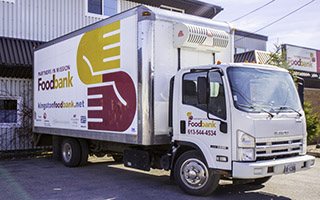Key Dates and Events in the History of the Food Bank
1984: The First Food Collection
A study was conducted by the Religious Hospitallers of St. Joseph to determine the Greatest unmet needs in the City of Kingston. In an effort to eliminate hunger in the area and exercise their ministry to attend to the sick and the poor they began the Food Bank in 1984. The first food collection was received on June 17, 1984. Four local Catholic Churches participated. The food was counted and sorted at St. Joseph Regional House in Amherstview and then forwarded to the St. Vincent de Paul Society for their emergency food distribution program.
1985-1986: Develops and Expands Food Collections
As the need grew it became necessary to expand the food collection program by networking with other Churches and agencies to heighten awareness of the food bank program. A full time employee was hired to address this goal. The Partners in Mission Food Bank opened in the Anglican Church – the Church of the Redeemer on November 6, 1985 on the feast day of Jerome Le Royer de la Dauversiere, the founder of the Religious Hospitallers of St. Joseph. A small depot was maintained at St. Joseph Regional House to meet the food needs in the Amherstview area. Although area Churches remain a steady source of food, the need became great enough that other more substantial grocery sources were developed. For example in 1986 in an effort to expand the amount of food donations the first food blitz covering the greater Kingston area took place.
1989: Employee and Volunteer Numbers Build
Outgrowing the space at the Church of the Redeemer the food bank moved in April of 1989 to 412 Bagot Street at a cost of $1,100.00 per month. Considerable repair work was required to bring the building up to usable standards. The repair work was completed, donated refrigerators and freezers were installed and the Partners in Mission Food Bank reopened at its new location.
By this time there were 5 employees. Numerous volunteers were needed to sort, stock shelves and prepare daily food orders for pickup. To this day the volunteers continue to be an integral and vital component of food bank operations.
1991: Demand Continues to Grow and the Food Bank Responds
Demand on the food bank continued to grow. Both the Telephone Pioneers and the local Kiwanis Club donated vans which allowed the food bank to better access the growing amount of grocery donations from local individuals and businesses.
One of the volunteers who had been providing administrative duties was hired, initially as a part time service user support worker and was soon offered a full time position to accommodate the increased work load and a rapidly growing service user base. As the need grew, new computers were purchased and a customized data base program was developed and put into place.
1995: Dramatic Rise in the Need for Food Bank Assistance
In 1995 the Provincial Government initiated major cut backs which had a far reaching negative impact on both food distribution and donations. Many donors were now themselves looking for assistance. Due to the immediate rise for food bank support, it became necessary for agencies across the province to apply service user eligibility criteria. The resulting changes were difficult to implement and required intense communication between the food bank and the public, particularly service users and other social service organizations.
1997: Food Bank is Separately Incorporated
In 1997, the Partners in Mission Food Bank was separately incorporated by Letters Patent under the laws of the Province of Ontario. A community Advisory Board was set up to advise Members and the Directors of the Corporation.
1998: Food Bank Achieves Registered Charity Status
Registered Charity Status was confirmed from Revenue Canada, Charities Division in 1998. Tax receipts, formerly issued by the Marie Morin foundation, one of the Religious Hospitallers of St. Joseph’s corporations could now be issued directly from the Partners in Mission Food Bank.
2001: Food Bank part of the Religious Hospitallers of St. Joseph Health System
In June, 2001 the Partners in Mission Food Bank was brought under the umbrella of the Religious Hospitallers of St. Joseph Health System. The Religious Hospitallers of St. Joseph is an organization, which in part, serves to assist each of the corporations they sponsor according to their responsibilities under Canon law as ministries of the Church. It also assists each separately incorporated entity to address and maintain their corporate status.
2003: Food Bank Purchases Current Larger Location
With space and suitability becoming an ever growing issue, the food bank purchased a 7,200 square foot building at 140 Hickson Avenue. Rent was replaced with a mortgage payment, which due to a large bequest from Mrs. Mae Bowles Gibson in 2005, was paid in full in 2006.


